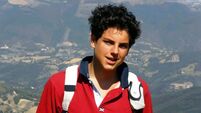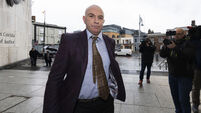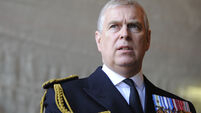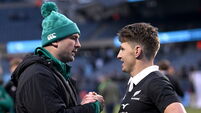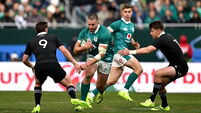Quiet unifier Pope Leo looks likely to lead buttoned-up papacy
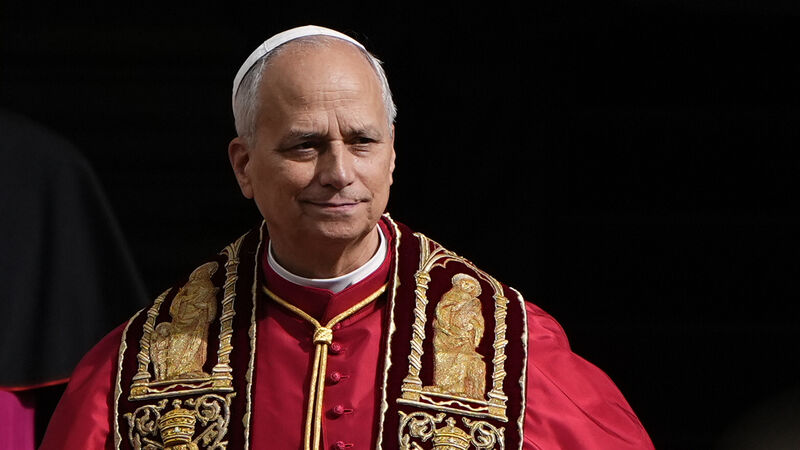
Pope Leo XIV, as an American, is not going to be regarded as a neutral player by the policymakers appears around the likes of Putin and Xi Jinping. Picture: Aaron Chown/PA
Veteran correspondents in the Vatican Press Office will tell you that when a pope is elected, he continues to be referred to as “new” for about 12 months.
During that time, his every move — and especially his every public utterance — is scrutinised for clues as to what type of papacy he embodies.
We are now halfway through this period since the election of Robert Prevost as Pope Leo XIV on May 8, but clues as to what kind of pontiff he will be are not very plentiful or insightful.
He is the first American to occupy the role, but he has yet to show his true colours.
“In the hours and days after his election, there was a mad rush by journalists and ordinary Catholics alike to parse through every statement he had ever made and every interview he had ever given to better understand where he might fall on some of the Church’s most contentious debates,” according to Christopher White, the author of Pope Leo XIV and the Dawn of a New Papacy, the first English-language biography of Prevost.
“But unlike some cardinals who jet around the world keynoting conferences and writing books, there is a limited paper trail for the new Pope.”
Unlike his fellow countryman, who bestrides the world stage like a blonde colossus, the “new” Pope continues to hide his light under a bushel.
He has displayed none of the bombast or attention-seeking of Donald Trump, nor has he made headline-grabbing statements.
He is certainly not a “rock star” Pope in the manner of John Paul II.
But precisely because of Trump, and his unbridled ambition and disregard for convention and moral norms, the election of Prevost has caused some unease among political scientists and diplomats due to how it has been perceived in places such as Moscow, Beijing, New Delhi, Tokyo, Riyadh, and Islamabad, as well as Berlin and Paris — places where, like it or not, the presence of an American Pope in the Vatican will be seen as enhancing the global reach and influence of the US.
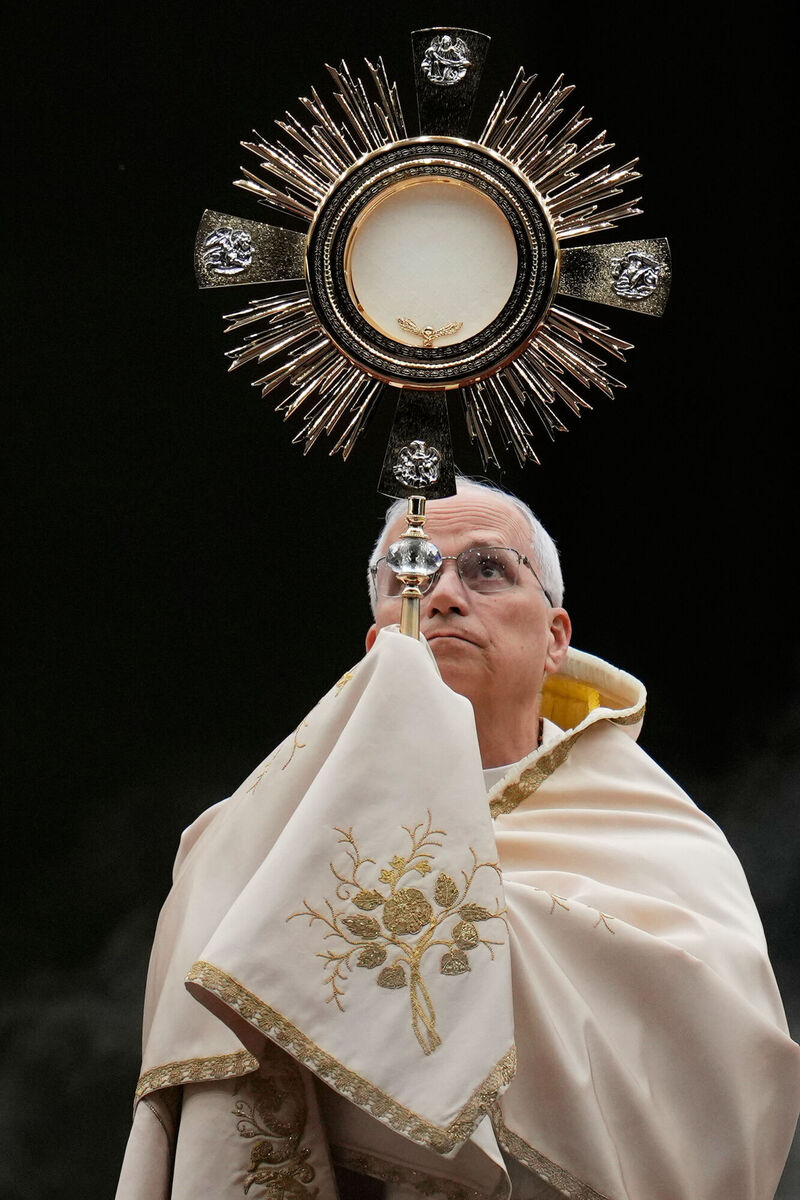
That's just part of the geo-political realities at a time when a new world order appears to be taking shape. Leo XIV, as an American, is not going to be regarded as a neutral player by the policymakers around the likes of Vladimir Putin and Xi Jinping driving that new world order.
Among Vatican insiders, the conventional wisdom had long been that it would be unwise to have a US pope — the opposition to such a development was based on the optics of having a pontiff from a political superpower, and what that might mean in terms of augmenting that superpower’s hegemonic influence.
The underlying assumption was that a president and pope should never come from the same place.
However, other concerns meant these fears were set aside at the conclave in May — chiefly that it would seem because of the need to find remedies for the Vatican’s dire financial situation — and it opened the way for Robert Prevost to become the 267th occupant of the role.
But if the Pope Leo goes after Maga money to sort out the Vatican’s financial crisis, some observers fear this could draw him into an alliance of some sorts with Trump
There is no doubt that the Vatican’s money problems is one of the items marked “urgent” in the Pope’s in-tray.
“Just days before Francis entered hospital for his final time, in February 2025, he established a new global fundraising commission to help close the Vatican’s annual budget shortfalls,” said White.
“While hard figures have always been difficult to come by for an institution that has never had clear accounting procedures, a July 2024 report estimated an annual operating budget deficit of €87m.
“Compounding the problem is a looming pension fund crisis that is estimated to be underfunded by €1.5bn.”
In addition to finances, Pope Leo faces a number of other ongoing challenges — including the ongoing scandal of clergy abuse and the Vatican’s desultory response to this.
Just last week, Reuters reported that, in Italy, 4,400 people were abused by Catholic priests in cases reported since 2020.
“In an usually critical report on the issue published on October 16, the Vatican’s child protection commission said only 81 of Italy’s 226 dioceses responded to a questionnaire about safeguarding practices it had drafted,” the report said.
Reuters said that Pope Leo, who met survivors of sexual abuse by clergy for the first time just recently, had told the Church’s newest bishops not to hide misconduct allegations.

“The global Catholic Church has been shaken for decades by scandals involving paedophile priests and the cover-up of their crimes, but local church leaders in Italy have been less forthcoming in confronting the issue.”
The Pope himself is exposed on this issue. According to Christopher White, who was the Vatican correspondent of the National Catholic Reporter, he is dogged by accusations that, as a former provincial of the Augustinians and as bishop of Chiclayo in Peru, he mishandled several cases of abuse.
“A more high-profile case involves three women from the diocese who have alleged that Prevost failed to open an investigation into allegations that they had been abused by two priests.”
Former president Mary McAleese, who holds a doctorate in Canon Law from the Gregorian University in Rome, has already been harshly critical of Pope Leo, based on the first 100 days of his pontificate.
Writing in the Catholic weekly The Tablet, she described him as “bog-standard patriarchal, patronising, and prone to tokenism”, noting that he had inherited a theology of male-only priesthood and has shown no inclination to challenge it.
On the evidence so far, this looks like being a very buttoned-up papacy with little likelihood of doctrinal reform and a rigid cleaving to tradition. This latter means no prospect of significant change on such “hot” button issues as sexuality, the ordination of women, or the admission of married priests — despite the crisis in vocations, so painfully evident in Ireland at present.
Robert Prevost was born in Chicago on September 14, 1955, and was ordained in 1982. He spent over 10 years in Peru, even taking out Peruvian citizenship, becoming the bishop of Chiclayo in 2014.
Back in Chicago for a spell, he was elected head of the Augustinians in 2001 before returning to Peru.
Pope Francis brought him to Rome in 2023, making him head of the Dicastery for Bishops and a cardinal a few months later. This gave him the enhanced profile that would count in the conclave that followed the death of Francis last April.
While in Peru, Prevost’s pastoral work among the poor and displaced earned him a reputation as a quiet unifier.
This was at a time when Shining Path, a Peruvian guerrilla movement, was waging a violent anti-government campaign. In the ensuing “dirty war”, an estimated 25,000 people died.
At this time, liberation theology — which had its origins in Latin America — had gained a wide audience. It was committed to changing unjust structures, along with the promotion of socio-economic change in a continent with great divides between rich and poor.
It was opposed not just by wealthy and powerful figures and military dictators but also by influential Cardinals in the Vatican, who regarded it as “too political” and tainted by Marxism.
It is not known if Peru’s Fr Gustavo Gutiérrez, considered the father of liberation theology, ever had Prevost’s full support.
Ecumenical prayer
As Pope Leo XIV, he made history last month when he and Britain’s King Charles III (who is head of the Church of England) participated in public in an ecumenical prayer in the Sistine Chapel, a first time for the leaders of the two faiths (Catholicism and Anglicanism) since the Reformation.
The Pope will make his first trip abroad on November 27, when he travels to the Turkish city of Iznik, formerly Nicaea, where the first ecumenical council of Christianity was held 1,700 years ago and which produced the Nicene Creed, a central profession of faith.
The Council of Nicaea (325-2025) was the first ecumenical council in history — the first in a series of 21 great councils up to and including Vatican II (1962-65).
The visit, which has important ecumenical dimensions, was one planned before the death of Pope Francis.
The gathering, in what was the ancient city of Nicaea, will also include the Orthodox Patriarch of Constantinople, Bartholomew.
The theme of unity is close to the heart of Pope Leo, and is reflected in his motto (“In the One, we are one”).
The meeting between the Pope and the Orthodox patriarch will be seen as a step towards reconciliation between the Roman Catholic and Eastern Orthodox churches, which have been divided since the Great Schism of 1054.

Unlimited access. Half the price.
Try unlimited access from only €1.50 a week
Already a subscriber? Sign in
CONNECT WITH US TODAY
Be the first to know the latest news and updates





